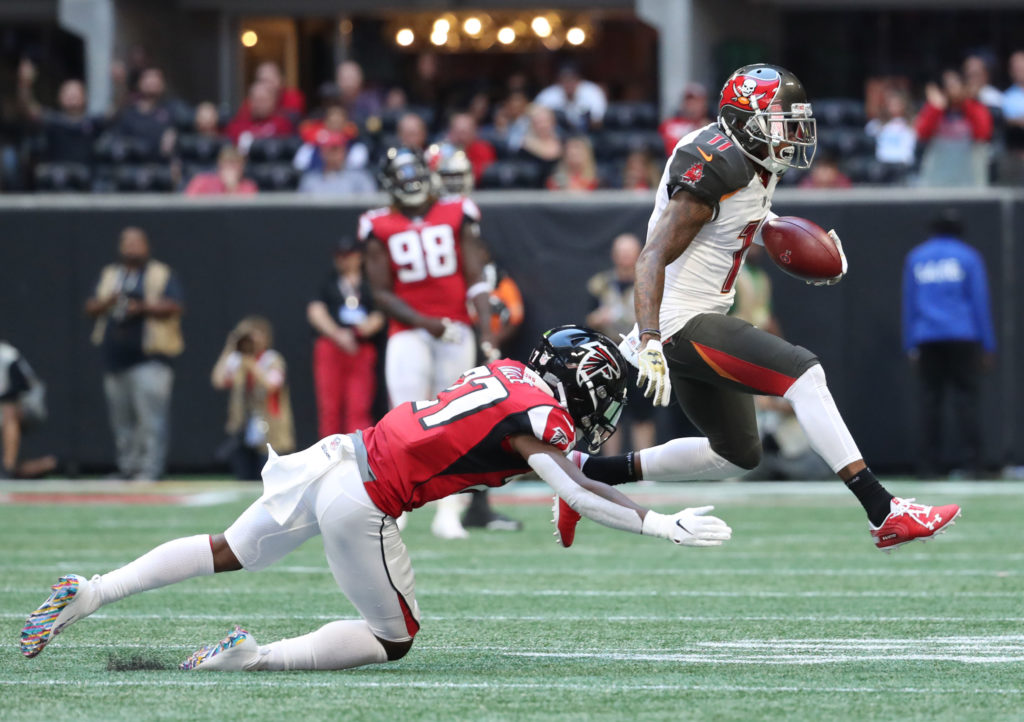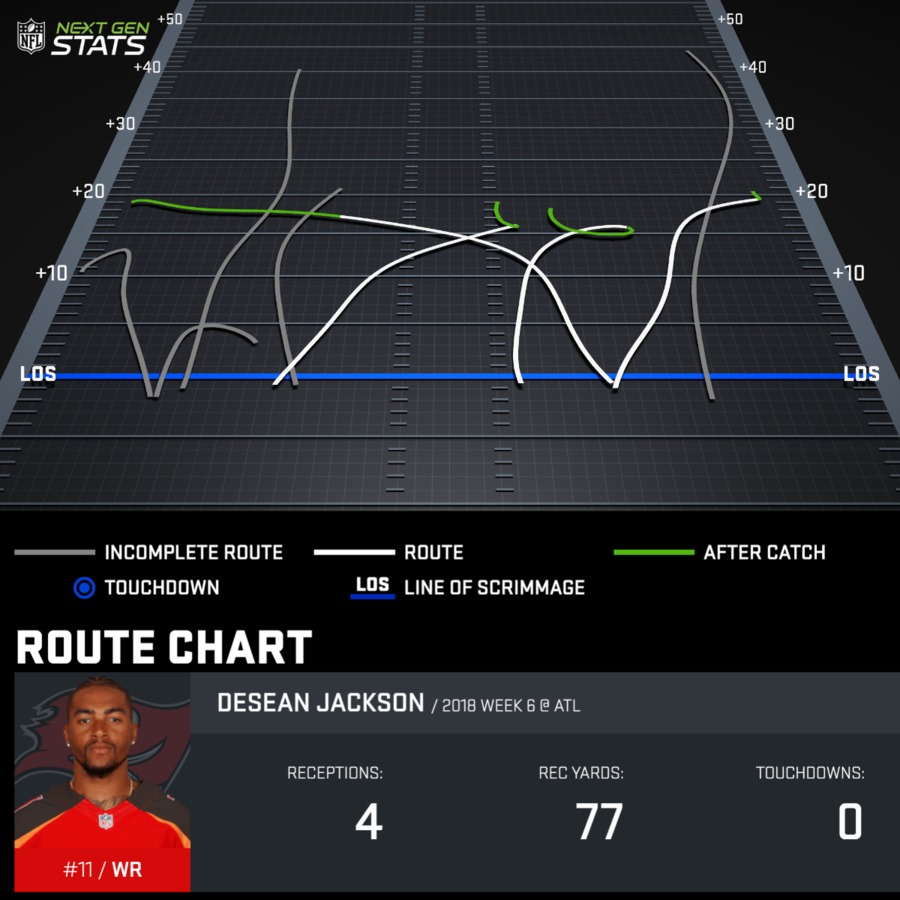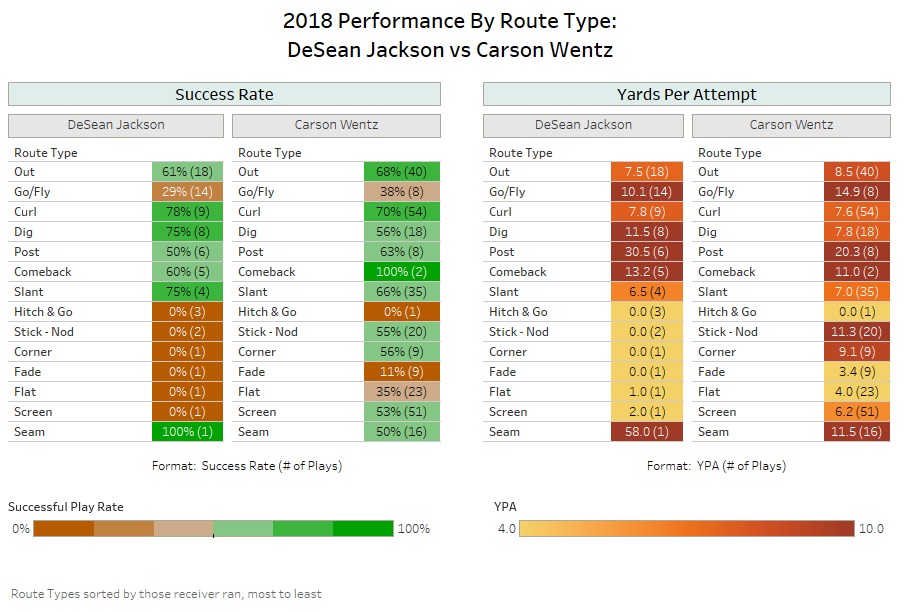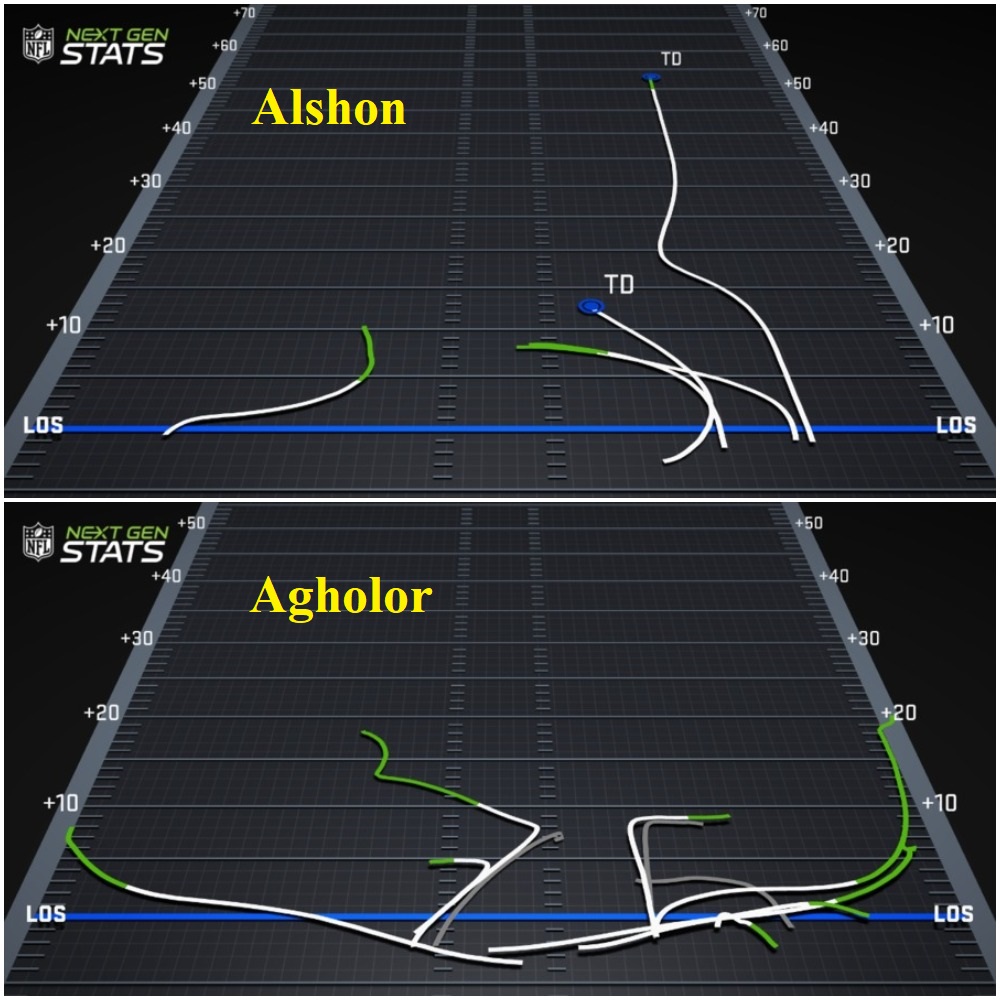Ad Disclosure
DeSean Jackson Addresses a Glaring Eagles Need

I didn’t like the DeSean trade at first.
Why?
I don’t really know. I guess I initially felt as though that ship had sailed, that we’ve been there, done that. I wasn’t big on the idea of going out and bringing Shady McCoy or D Jaxx home, because it felt like people were making that suggestion from a sentimental standpoint, like they were frustrated with the way Chip Kelly shipped out both of those guys back in the day. Those fans maybe felt like the Eagles would be “righting a wrong” by going out and reclaiming Shady and DeSean, which made the argument seem emotional to me and not necessarily pragmatic.
But the more I think about it, Jackson addresses a glaring need in the Eagles’ offense, which is providing a deep threat as a WR2 who can stretch the field and space things out. Torrey Smith did the latter without putting up huge numbers in 2017, and after Mike Wallace went down in week two of last season, the Birds really had nothing in this department.
For starters, DeSean averaged 18.9 yards per catch this season, which was his best YPC since 2014 and third best number of his career. He only caught 41 passes, which was the second-lowest number of his career due to a late season Achilles injury, but he made those passes count by efficiently turning them into 777 yards and 4 touchdowns. He was targeted 74 times, so you when do the math vs. actual receptions, his catch percentage was only 55.4%, which truly is not surprising for a guy who received more downfield targets than teammates Mike Evans, Chris Godwin, and Adam Humphries. DeSean only played 12 games this year, so he would have finished with 50+ receptions and 900+ yards if you extrapolate his numbers over a full season.
There’s a great stat that helps us explain that lower catch percentage by categorizing players who receive the most downfield targets, which are naturally low percentage efforts. At the NFL’s Next Gen Stats website, DeSean finished second in the league this season in “targeted air yards,” (TAY), which shows us how far down the field each player is on their average target.
Here’s your top five:
- Robert Foster: 20.6 yards down field per target
- DeSean Jackson: 19.1 yards down field per target
- Robby Anderson: 16.5 yards down field per target
- Kenny Stills: 16.4 yards down field per target
- David Moore: 16.4 yards down field per target
For comparison, the Eagles top TAY receiver was Alshon Jeffery at 10.8, which was 53rd in the NFL.
As far as route running, I went back through some of DeSean’s charts and picked this one out as fairly typical for his 2018 season:
No touchdowns in that Atlanta game, but four catches for 77 yards averages out to 19.3 yards per grab.
You see a couple of go/fly routes in there, a curl, an out, usually a combination of stuff behind those deep routes. He runs all of that from the slot in addition to his typical wide starting point, but he’s not a seam/corner/fade type of guy, which is what Zach Ertz and Alshon Jeffery are running anyway. You wouldn’t expect that out of DeSean to begin with.
Warren Sharp at Sharp Football Analysis shared a cool graphic on Monday, cross-referencing DeSean’s route success with Carson Wentz’s numbers, and I’ll pull the graphic out here to show you how the two match up:
You like how those out and curl numbers matchup specifically, and the deep post yardage numbers are exactly what you would expect them to be.
As far as Carson Wentz and his habits, it’s kind of wonky to try to go through his charts, simply because he didn’t have a deep threat to work with last season. Plus, when you factor in the ACL and the back injury, we really don’t know how much “oomph” he was able to put on balls thrown 20+ yards down the field.
According to Player Profiler, Wentz finished 26th in the NFL last season with just four attempts of 20+ yards per game. He threw 44 of those passes over the course of 11 games. In 2017, he finished 9th in this category, chucking 64 deep passes at a clip of 4.9 per game.
I see some people wondering what’s next for Nelson Agholor now that DeSean is back in the fold, and while the money is a totally separate issue, the idea of whether or not he’s worth bringing back at $9 million, there really aren’t any issues with overlap on the field, as Agholor (and Alshon) run route trees that are complementary of Jackson.
These are typical Agholor (slot) and Jeffery (WR1/outside) charts:
So Jackson fits a need, which I think you already knew. This hopefully illustrates that a little bit better.
DeSean is 32 years old and entering his 12th NFL season. Maybe there are age concerns, and he did have the Achilles thing last year, but his productivity has been pretty damn steady over the course of his career and now you’re giving a healthy Carson Wentz the deep threat he didn’t have in 2018.
Kevin has been writing about Philadelphia sports since 2009. He spent seven years in the CBS 3 sports department and started with the Union during the team's 2010 inaugural season. He went to the academic powerhouses of Boyertown High School and West Virginia University. email - k.kinkead@sportradar.com


